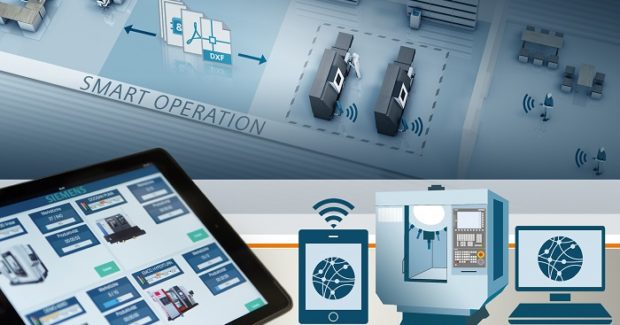Internet of Things Automation and the Tax Breaks that Come with It
The R&D Tax Credit is one of the most valuable tax breaks for U.S. manufacturers. It rewards work done to increase the efficiency of an automated factory system or ensure that multiple systems within a facility work as one. Let’s take a closer look into this credit’s true intent and see if it applies to your automation and system integration activities.
Posted: August 12, 2017
Despite the reports of doom and gloom over the years, U.S. manufacturing is in the midst of a major revival. But don’t take my word for it – just take a look at the latest numbers: It’s been estimated that more than half of U.S. manufacturing leaders are looking at a five percent or more increase in annual revenue over the next five years. Combine this with the estimates of an “industrial Internet” market that will add $10 trillion to $15 trillion to global GDP over the next 20 years and it becomes clear that the Internet of Things (IoT) and the advancement of automated and system integration technologies will play a vital role in jumpstarting U.S. manufacturing during the coming years.
However, as is often the case when implementing new technologies, the prominence of IoT has already had (and will continue to have) an immense impact on the type of workers that will be needed in factories across America. If they aren’t long gone already, the days of the old assembly line worker are clearly numbered. In recent years, manufacturing has shifted to the need for more technically skilled, STEM-oriented employees, the kind that are able to design, develop and run what are now largely automated industrial processes and systems. Unfortunately, considering our nation’s well-documented STEM labor shortage, the shift to more technical skillsets is one that many within the manufacturing sector are not fully prepared for.
In order for these new technologies to fulfill their economic promise, innovative companies that are implementing IoT systems will need to be able to attract the best in what is already a thin supply of technical talent. The U.S. government has been paying attention to this trend and has given innovative manufacturers, system integrators and industrial automation companies an avenue to grow and remain competitive in the marketplace.
Even though the Research and Development (R&D) Tax Credit has been around for over three decades, this credit is perhaps one of the most misunderstood and under-claimed provisions of the tax code. It has been estimated that only five percent to ten percent of eligible businesses claim the R&D Tax Credit – a troubling trend when you consider that this credit is (a) one of the most valuable tax breaks for U.S. businesses and (b) an incentive that is clearly designed to reward the type of cutting-edge innovation that is taking place right now in fields related to IoT. So what exactly qualifies a company for the R&D Tax Credit? And why are so many businesses overlooking these savings? The answer to these two questions are related and go a long way in explaining not only the credit’s true intent, but also why it applies perfectly to automation and system integration activities.
From my experience, when business owners hear the words “research and development” they have the habit of thinking only in terms of white lab coats, petri dishes or Silicon Valley startups. The truth, however, is that the R&D Tax Credit is also very much about incentivizing applied research . . . or rather, the technical work and experimentation that takes place behind a computer or on the factory floor to enhance products or processes. This relates to IoT activities as the enhancement of automated and systematic processes that will traditionally lead to eligibility, whether it is the work done to increase the efficiency of an automated factory system or work done to ensure that multiple systems within a facility work as one.
As modern-day manufacturing implements and integrates more and more of these systems, and considering how the R&D Tax Credit is a wage-based, dollar-for-dollar credit that rewards companies for employing the kind of workers that can design and develop these systems, it’s easy to see the long-term intent of this credit: creating technical jobs and keeping those jobs on U.S. shores. Generally, the more technical workers a company employs, the better the tax results for that company.
To show the value of this credit in action, let’s take a real-world example: An industrial automation company that specializes in the development of custom robotic systems received over $1 million in federal R&D tax credits for two years’ worth of qualifying activities. Among their many qualifying projects, one included the development of an automated coating system at an onsite manufacturing facility for a client. Specifically, their complete turnkey installation of this coating system included a robotic manipulator, integrated programming procedures and controls, as well as an integrated paint delivery and application process. While implementing this system, the automation company had to overcome a number of design challenges, one of which was related to the automated solvent cleansing system.
During testing, technicians found that if the paint process was interrupted in order to fill the paint pot with additional solvent, the paint would, in turn, clog the entire system. To solve this problem, they tested alternative speeds at which the solvent filled the paint pot and determined the appropriate time for the solvent to enter the paint pot to ensure a complete painting process. Through testing and analysis, the industrial automation company ultimately made the appropriate adjustments to ensure that the paint never clogged the system. In the end, their employees found a technical solution to solve a client’s problem – a classic path to qualifying for the R&D Tax Credit.
This firm’s day-to-day activities allowed them to receive a game-changing benefit for their business, one that will allow them to purchase new equipment, hire new employees and further reinvest into improving their services. While not every business will receive such a result, companies performing IoT activities are among the best candidates for the credit in terms of financial value as the U.S. government continues to reward the dynamic work taking place in this space. Through the R&D Tax Credit, our government has invested greatly in ensuring that the U.S. remains competitive in automated technologies and that high-paying technical jobs stay in American factories. If your company works in this space, you should be looking into this credit. It could be the best decision you make for your business.
















